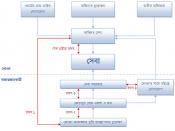Introduction
Quality of service has been studied in the area of business management for years because the market is more competitive and marketing management has transferred its focus from internal performance such as production to external interests such as satisfaction and customers' perception of service quality (Gronroos, 1992). Now, the major new element in world market competition is quality.
As so in hospitality industry, the service quality is one of the most important thing, to answer the question how to improve the service quality? We should list the problems that we always have relative to the service quality first. Parasuraman, Zeithaml, and Berry (1985) developed the "Gap Model" of perceived service quality.
"A set of key discrepancies or gaps exists regarding executive perceptions of service quality and the tasks associated with service delivery to consumers. These gaps can be major hurdles in attempting to deliver a service which consumers would perceive as being of high quality" (Parasuraman et al.
1985, p. 44).
Five gaps were identified:
Gap 1: The difference between customer expectations and management
perceptions of customer expectations.
Gap 2: The difference between management perceptions of customer
expectations and service quality specifications.
Gap 3: The difference between service quality specifications and the service
actually delivered.
Gap 4: The difference between service delivery and what is communicated
about the service to customers.
Gap 5: The discrepancy between customers' expectations of the service and
their perceptions of the service performance.
Gap 1. Consumer expectation - Management perception gap
This is a gap between consumer expectation and management perception. This gap occurs when management is either totally feels of certain critical consumers expectations or was misreading the importance of those expectations to consumers. At this stage, the management does not know how the service should be designed. They also don't...


